Bikes with training wheels and adaptive tricycles are both good options for kids with autism. However, if you have to decide between the two for your child, the wiser choice would be adaptive tricycles.
Here are the main factors you should consider when choosing a bike for an autistic kid: stability, safety, comfort, sensory input, and ease of learning. In each of these factors, adaptive tricycles are better suited for autistic kids than bikes with training wheels.
Let’s walk through each factor and get to the point—what works, what doesn’t, and why.

Training Wheels vs. Adaptive Tricycles: The Basics
Training wheels are basic add-ons to standard bikes. So, when we speak of a bike with training wheels, we mean a regular bike that has been fitted with extra training wheels.
The main advantage of a bike with training wheels is that it offers good balance. However, they tend to be unstable on uneven ground and can make turning awkward.
Adaptive tricycles, on the other hand, are designed specifically for kids who need more support—physically, cognitively, or both.
They’re stable, customizable, and often come with features like parent steering, seat belts, and padded seats.
So, which is better for an autistic kid?
1. Best for Stability: Adaptive Bicycles
Bikes with training wheels are more stable than regular bikes, but not stable enough for autistic kids to ride long-term.
Training wheels give the illusion of stability, but sometimes, they’re not quite reliable. It is very easy for a bike with training wheels to tip during turns or if a wheel lifts off the ground.
Adaptive tricycles, on the other hand, are built for real-world stability. The center of gravity is lower, and it is easier for the three wheels to stay on the ground, even on turns.
With an adaptive tricycle, an autistic kid is safer, can ride with more confidence, and there is less chance of the bike tipping.
2. Best for Sensory Impact: Adaptive Bicycle
Many autistic children are sensitive to loud or jarring sensations. Training wheels can rattle and create vibrations that may be too overwhelming for an autistic kid.
Adaptive tricycles are designed with this consideration in mind, so they are usually smoother and quieter. Some models even come with soft grips or padding to reduce sensory input.
Practical Tip: If you are buying an adaptive tricycle for your autistic child, choose a trike with foam handlebars and rubber tires to minimize sensory discomfort.
3. Best for Safety: Adaptive Tricycles
An adaptive tricycle is much safer for an autistic kid than a bicycle with training wheels, and there are two reasons why.
First, training wheels do not actually prevent tipping. Yes, they provide more balance on flat, smooth paths, but when the ground is uneven, having training wheels does not do very much to stop the bike from tipping.
Secondly, braking systems can also be tricky for kids who struggle with coordination. Most bikes with training wheels do not provide extra features to ensure the safety of a child if they cannot maneuver the braking system.
Adaptive trikes often include features like backrests, harnesses, foot straps, and hand brakes that are easier to manage and make braking or controlling the bike a little easier for an autistic child.
4. Best for Comfort and Support: Adaptive Tricycles
Most bikes with training wheels are made for neurotypical kids. They assume a baseline level of strength and coordination.
Adaptive tricycles are more supportive. They offer ergonomic seating, posture control, and adjustability.

5. Better Learning Curve: Adaptive Tricycles
An autistic child is very likely to struggle with pedaling and balancing at the same time, and training wheels don’t help much. There have even been credible arguments that training wheels actually delay learning to balance.
Adaptive trikes simplify the process. They are designed to allow them to focus on pedaling and steering without the fear of falling.
Once again, adaptive tricycles are better suited for autistic children.
6. Adaptive Tricycles Make are Easier for Parents to Help
Autistic children generally need a lot of help learning to ride a bike, and even when they do, they still require a lot of assistance riding on a day-to-day basis.
Training wheels generally do not have all the features you might need to grant that much-needed riding assistance to an autistic kid: all you can do is supervise.
With many adaptive trikes, you can steer, brake, and assist directly. That’s helpful for both safety and teaching.
7. Confidence Building Easier with an Adaptive Tricycle
For an autistic kid learning how to ride a bike, confidence is everything. And it certainly helps if the bike is designed to make it as easy as possible for the kid to pick up the confidence to ride on. Early success leads to more riding and better progress.
Compared to training wheels, adaptive tricycles give kids that early success by being easier to use, safer, and more fun.

Adaptive Tricycle Myths Cleared Up
-
Myth: Training wheels are the best way to learn to ride.
Truth: They often delay learning real balance. Balance bikes or trikes are better. -
Myth: Adaptive tricycles are only for kids with major physical disabilities.
Truth: They’re for anyone who benefits from extra support—autistic kids included. -
Myth: They’re too expensive.
Truth: Many families get help from nonprofits or grant programs. Some insurance policies may even help.
The Bottom Line
Adaptive tricycles are the better choice for most autistic children. They’re safer, more stable, and more accommodating to both sensory and motor needs. They make riding possible—and enjoyable—for kids who might otherwise struggle.
Buying Tips
Look for:
- Parent steering handle
- Seat harness or safety straps
- Quiet tires and smooth pedaling
- Adjustable seat and handlebars
- Custom add-ons if needed
Need help affording one? Check out:
If you're serious about finding a bike that works for your child, not just fits them, but helps them thrive, skip the training wheels and go straight to an adaptive tricycle. It’s a better experience for everyone.

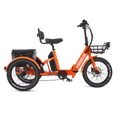

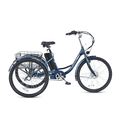
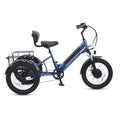
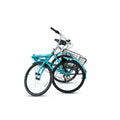
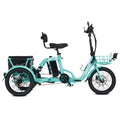


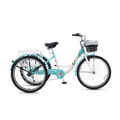
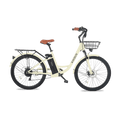
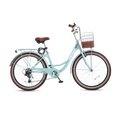
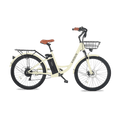
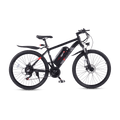
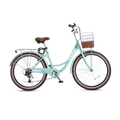









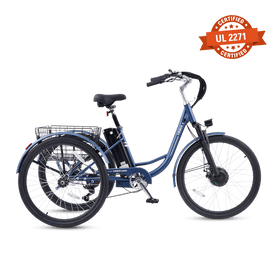
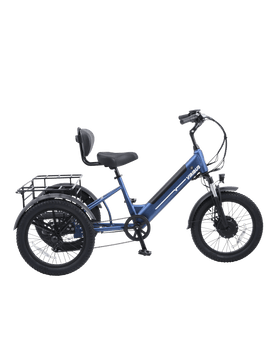





Leave a comment
All comments are moderated before being published.
This site is protected by hCaptcha and the hCaptcha Privacy Policy and Terms of Service apply.